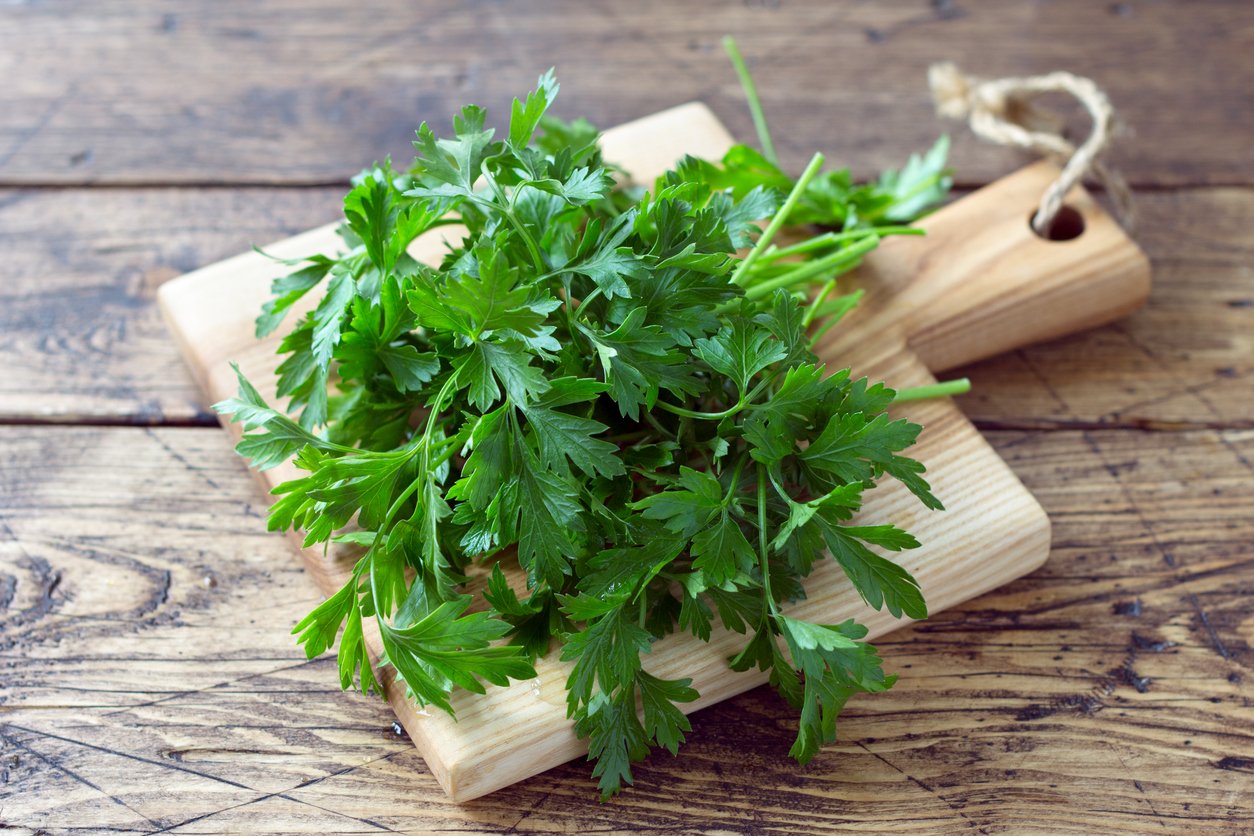You might know parsley as the humble green garnish that gets pushed to the side at restaurants. But did you know this earthy herb is actually a health superhero in disguise? Whether it’s that sprinkle of green on a pasta dish or the fresh, zesty taste in tabbouleh, parsley is a culinary staple that’s ready to step into the spotlight.
While parsley might just look like another leafy green, don’t let its simple appearance fool you. It’s rich in essential vitamins, minerals, and disease-fighting chemical compounds. Imagine adding a simple, flavorful ingredient to your meals that can even help fight cancer!
Curious about how this common kitchen herb can give your health a boost? In this article, you’ll uncover the impressive benefits of parsley and learn how to incorporate it into your diet. Whether you’re a seasoned cook or just looking to add some easy nutrition to your meals, parsley has got you covered. It might be time to transform this humble garnish into your new favorite superfood!
What Is Parsley?
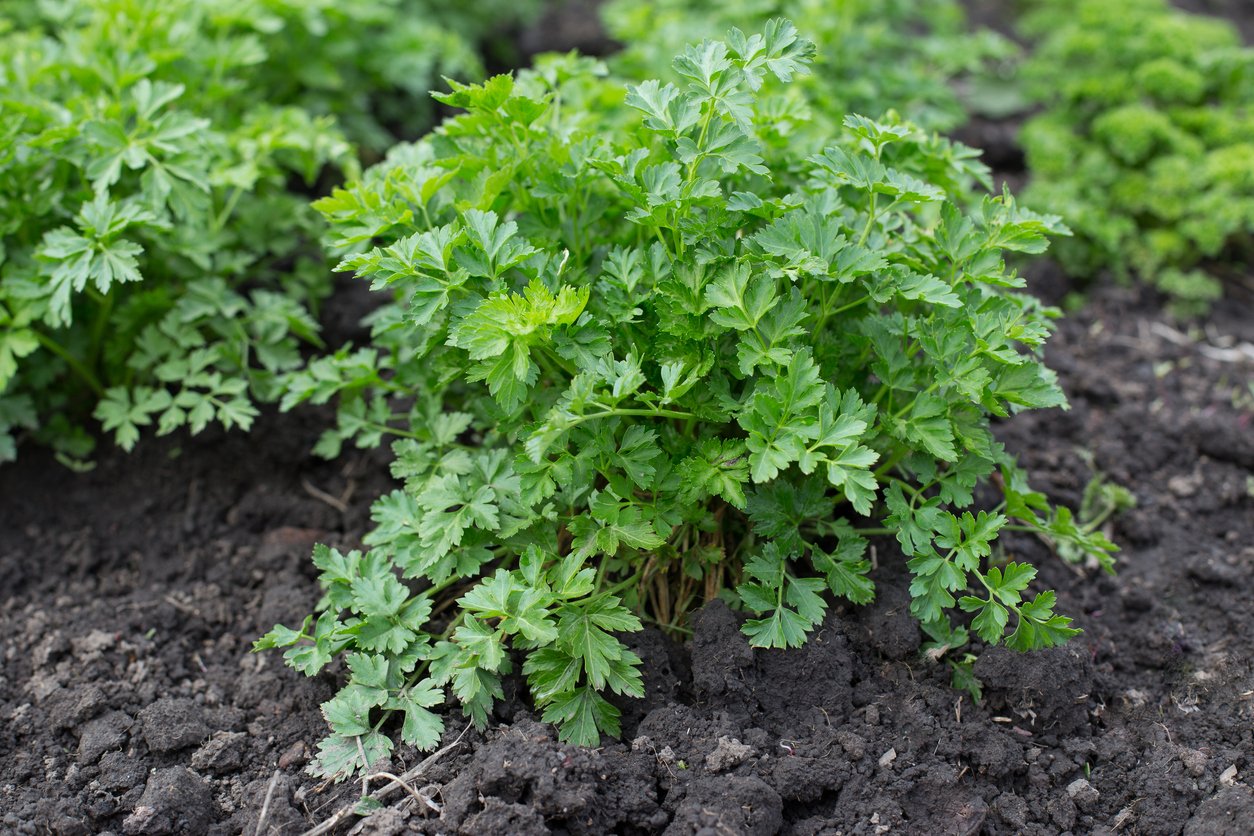
Parsley is a leafy herb in the Apiaceae family, known as umbellifers, which also includes carrots, dill, and celery.
Although it’s now found around the world, parsley is native to northwest Africa and the Mediterranean.
There are three main types of parsley you’re likely to encounter:
- Neapolitanum (flat-leaf or Italian parsley) is used more in cooking due to its stronger flavor.
- Crispum (common or curly-leaved) is often used as a garnish.
- Tuberosum (Hamburg or turnip-rooted) is grown for its edible roots and leaves.
You can find parsley in many European, Middle Eastern, and American cuisines. Its sharp, peppery, and grassy flavor goes well with a wide variety of foods.
Parsley Nutrition
Nutritionally, parsley is a powerhouse. Like other leafy greens, it’s an excellent source of vitamin K, which is crucial for bone health and blood clotting. Believe it or not, parsley has more vitamin K1 than kale, with just two tablespoons of raw parsley containing more than double the recommended daily amount for women and 100% of the amount for men.
Additionally, when combined with regular sunlight exposure, parsley can help your body synthesize CoQ10, an important antioxidant.
This potent herb is also a source of calcium, potassium, and magnesium and provides a good amount of vitamins A and C, as well as folate. These nutrients, as well as antioxidant compounds like apigenin, contribute to its myriad health benefits.
But as you’ll see, parsley shines in one area in particular.
Parsley and Cancer
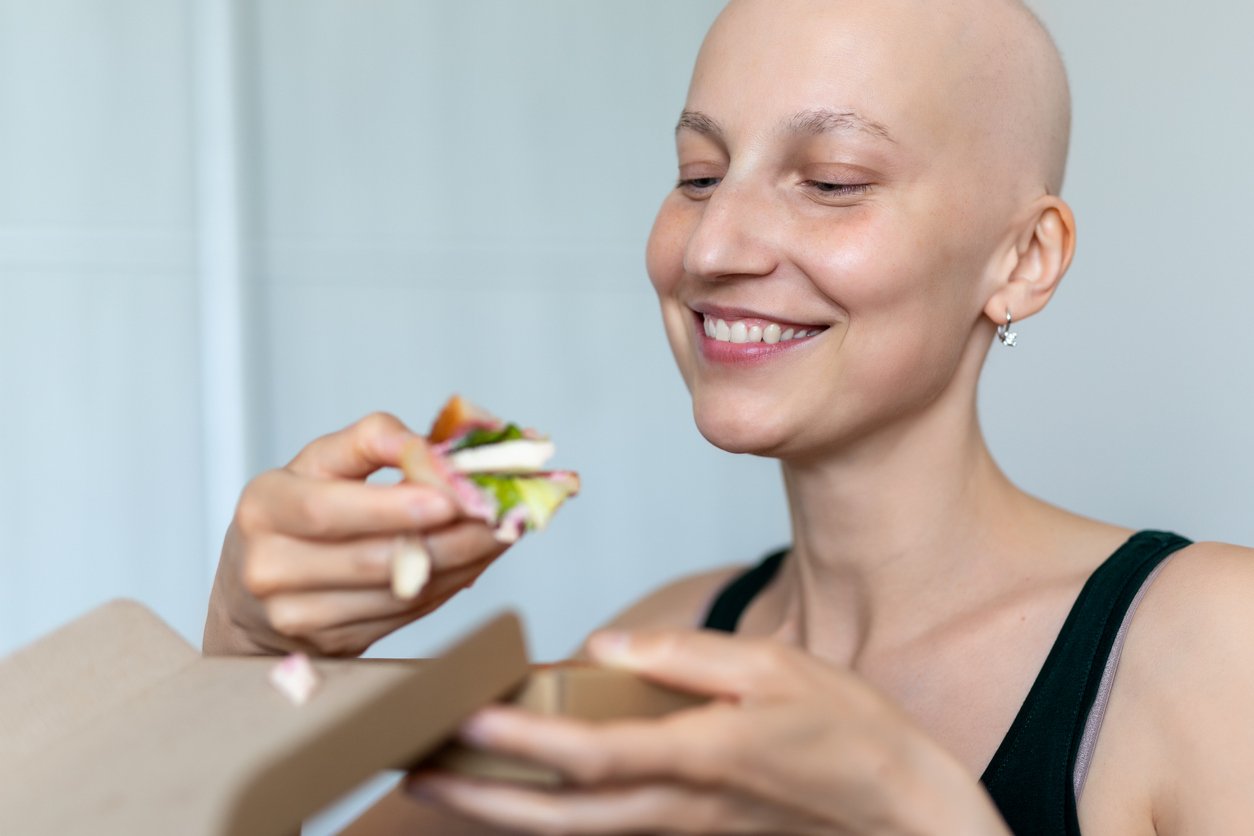
Apigenin, a flavonoid compound found in parsley, has repeatedly been shown to have strong anticancer properties. In fact, more than 1,400 PubMed-indexed journal articles relate to the compound’s role in cancer prevention and treatment.
In research published in September 2015 in Oncotarget, scientists identified for the first time how apigenin is able to effectively slow down or stop an undesirable enzyme called IKKA, which plays a role in cancer progression. Their conclusion: Apigenin has the potential to significantly reduce cancer progression.
The researchers also showed that apigenin stops tumor growth and lowers the growth rate of dangerous cancer cells in mice (our view on the use of animals in medical research is here).
However, this research is not alone in identifying parsley’s potential anticancer abilities.
- A 2015 study showed parsley extract prevented DNA damage and stopped the proliferation of breast cancer cells in vitro.
- A 2021 study in Nutrition and Cancer used a parsley methanol extract on glioblastoma (a type of brain cancer) cells and found it had antioxidant and antiproliferative properties against the cancer.
- Apigenin has also been studied as a complementary treatment to chemotherapy in leukemia, inducing cell death in cancer cells and improving the sensitivity of certain chemotherapy drugs without additional side effects.
How to Take Advantage of the Anticancer Compounds in Parsley
Dried parsley — with 13,000 mg per 100 grams — is one of the most abundant sources of apigenin. But fresh parsley has a decent amount, too, with around 215 mg per 100 grams.
To get a 10 mg dose, as used in a study on colon cancer by Professor Harald Hoensch of the University of Frankfurt, you would need to take one tablespoon of fresh chopped parsley per day. Or you could sprinkle a small amount of dried parsley into your food.
Other sources of apigenin include grapefruit, peppermint, thyme, raw celery, and rutabagas, as well as chamomile flower tea.
When you begin to add parsley to your meals, here’s a tip: much of the vitamins and volatile compounds are lost during cooking, so eat it raw or add it at the end of cooking, right before serving.
Parsley’s Other Health Benefits
Parsley has some powerful cancer-fighting potential, but its healthful properties don’t stop there. Not even close.
Parsley and Bone Health

Parsley‘s high vitamin K content makes it a beneficial food for your bones. A meta-analysis published in the medical journal Medicine highlights the role of vitamin K in preventing bone fractures. Upon examining five different studies, researchers found higher dietary intake of Vitamin K1 resulted in a 22% lower risk of fractures.
Vitamin K1 is also essential for activating osteocalcin, a protein that binds calcium to bones, contributing to bone mineralization and strength. This activation process is crucial because it ensures that calcium, a primary component of bone, is utilized to maintain bone density and prevent fractures.
Parsley Supports Overall Immunity
Parsley’s rich antioxidant properties, attributed to plant compounds like apigenin and quercetin, play a crucial role in enhancing immune function. These antioxidants help reduce oxidative stress and inflammation, which are key factors in maintaining a robust immune system.
One 2024 study in the journal Molecules noted parsley’s effectiveness in alleviating dermatitis symptoms and muscle cramps, both of which can be linked to immunity. For instance, a reduction in issues like redness and scaling indicates parsley’s ability to support skin health, a vital aspect of the body’s first line of defense against pathogens.
Another study on parsley essential oil extract showed high anti-inflammatory, antifungal, and antibacterial potential. This was largely due to its myristicin content, a natural insecticide that’s also found in nutmeg.
Brain Benefits of Parsley

A study on the therapeutic effects of parsley as a functional food highlighted parsley’s potential to boost brain health and alleviate anxiety and depression. Although it was conducted on mice, the research showed that parsley extract reduced depressive behavior and anxiety as the mice explored more and reacted less to stress.
The study highlighted parsley’s strong antioxidant properties, which are attributed to polyphenols like apigenin and quercetin. These antioxidants combat oxidative stress, which is also a factor in mental health issues.
Apigenin, in particular, may play a role in parsley’s brain-boosting superpowers. An earlier 2015 study found that apigenin could strengthen the formation of neurons and connections between brain cells.
The findings suggest parsley could be a natural and safe way to help manage anxiety and depression, offering benefits with fewer side effects than traditional medications.
Bonus benefit: Eating a bit of fresh parsley after your meal will also freshen your breath naturally.
Parsley Precautions and Downsides
Parsley can cause photosensitivity, whether ingested or if the oils get on the skin, leading to skin reactions upon exposure to sunlight. This is due, at least in part, to psoralen, which is a compound found in parsley that can increase skin sensitivity to UV light.
Some individuals may also experience allergic reactions to parsley, including skin rashes, hives, or respiratory issues. Those with known allergies to plants in the Apiaceae family should exercise caution when including it in their diet. Cross-reactivity with birch pollen may also occur in sensitive individuals.
Additionally, high consumption of parsley can stimulate uterine contractions. If you’re pregnant, you should probably avoid large amounts of parsley to prevent potential pregnancy complications.
Parsley may also interact with certain drugs. A 2023 study showed how apigenin can affect the metabolism of drugs like dasatinib, a medication used for leukemia treatment. The study found that apigenin inhibits certain enzymes in the liver, which can alter the drug’s effectiveness and increase the risk of adverse effects.
How to Use Parsley in Recipes
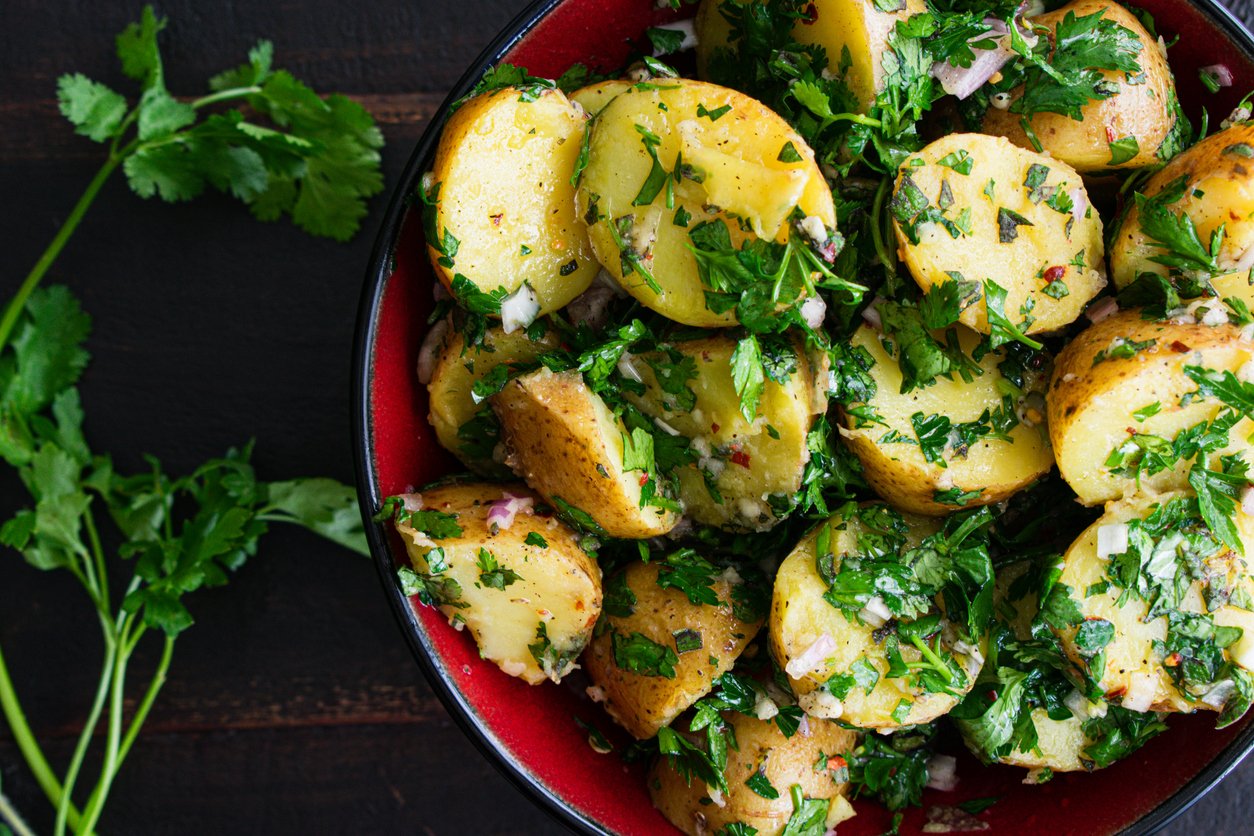
Whether you choose to consume parsley for its cancer-fighting prowess or other impressive health benefits, it’s a versatile herb that can be used in a variety of recipes for flavor and nutrition.
Flat-leaf or Italian parsley works well when cooked in dishes like grain bowls, pasta dishes, and soups. Its bright green color and mild, peppery taste shine when mixed into marinades and dressings or blended into pestos and chimichurris.
Raw, you can throw it into any type of salad, like tabbouleh or potato salad, for a zesty, herbaceous flavor.
Curly parsley is more frequently used as a garnish, but don’t leave it sitting on your plate! It’s just as good for you as the flat-leaf variety and can also be incorporated into raw or cooked dishes — with a milder flavor.
Dried parsley, like other dried herbs, has a concentrated flavor. You can add it to soups, stews, and sauces during the cooking process to impart its flavor. Dried parsley is also a convenient option for marinades and dips when you don’t have fresh leaves on hand.
When substituting dried parsley for fresh, use one-third the amount, as dried herbs are more potent. As for which is better, it mostly comes down to how you’re going to use it. But, there is some evidence that drying herbs may reduce the potency of essential oils as well as chlorophyll content.
Parsley Recipes
Ready to infuse your meals with fresh, vibrant flavors? Here are three tasty and healthy plant-based recipes that showcase parsley as a star ingredient! Each dish highlights the herb’s bright, herby taste and its numerous health benefits, from being rich in vitamins A, C, and K to its powerful detoxifying properties. Whether you’re looking for a refreshing juice, a flavorful grain dish, or a zesty condiment, these recipes are sure to delight your taste buds and boost your nutrition with parsley.
1. Italian Gremolata

Parsley truly shines in the traditional Italian recipe for gremolata. This vibrant green herb not only adds a splash of color but also delivers a fresh, herby flavor that brightens any dish. When paired with aromatic garlic and tangy lemon zest, it creates a fresh burst of flavors that enhance every bite. Sprinkle this zesty condiment over your favorite savory dish to transform any meal into a delightful culinary experience. Parsley’s natural freshness and vibrant taste make every dish it touches simply irresistible!
2. Detox Juice
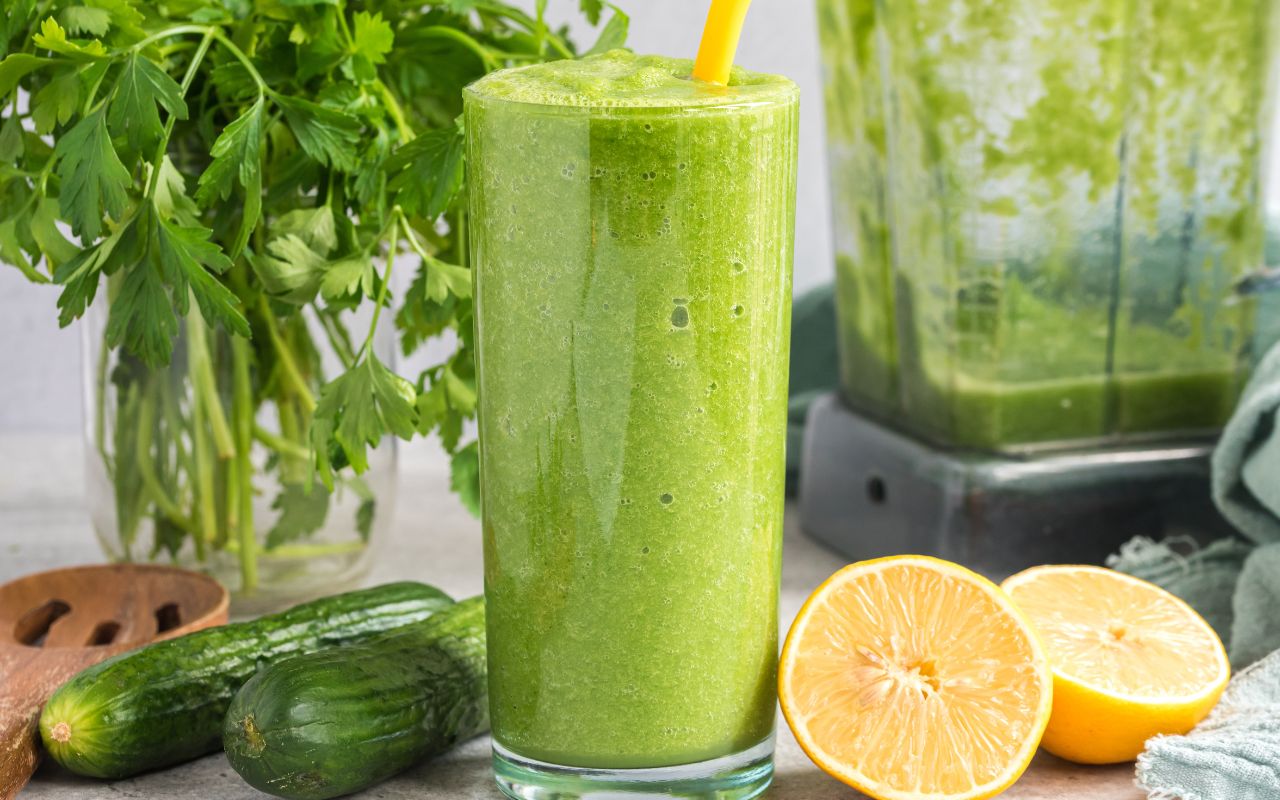
An ultra-nourishing green vegetable juice, our detox blend boosts your body’s natural detoxification system through a wealth of nutrients and natural hydration. Crafted with cucumbers, celery, lemon, and parsley, it is both refreshing and revitalizing. Parsley, celebrated for its potent detoxifying properties, is rich in vitamins A, C, and K and packed with antioxidants that enhance your body’s detox pathways. When combined with the hydrating benefits of cucumbers and celery, along with the zing of lemon, this juice becomes an invigorating, cleansing, and refreshing way to enjoy parsley and other delicious greens!
3. Yummy Tabbouleh Salad

Parsley, parsley, and more parsley! Our tabbouleh salad is all about packing in as much fresh, herby flavor as possible. Parsley takes center stage, bringing not only a refreshing taste but also plenty of nutrients. Rich in vitamins A, C, and K and full of antioxidants, parsley supports your immune system, skin health, and detoxification. This salad is perfect as a hearty main dish or a flavorful side to your favorite plant-based proteins. Enjoy the vibrant, nutritious boost in every bite!
Parsley Is More Than Just a Garnish
So, the next time you see that sprig of green on your plate, think twice before pushing it aside. Embrace parsley for the health-boosting superfood it is, and enjoy the myriad benefits it brings to your table. Whether you’re looking to explore parsley’s cancer-preventative activities, improve your bone or brain health, or improve your general immunity, parsley deserves a special place in your diet. Start incorporating this humble herb into your meals today and experience its powerful health benefits for yourself.
Tell us in the comments:
- Were you aware of parsley’s anticancer superpowers?
Featured Image: iStock.com/OlgaLepeshkina
